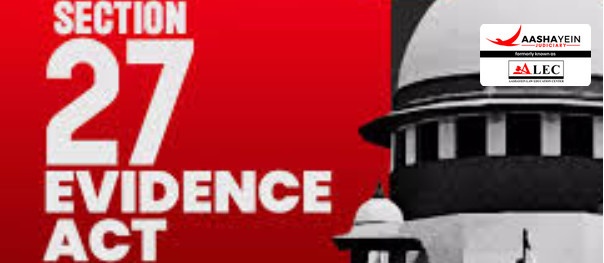Bench comprising of Justice Abhay S. Oka and Justice Ujjal Bhuyan
Introduction
The Supreme Court clarified the evidentiary value of disclosure statements under Section 27 of the Indian Evidence Act (Now section 23 of BSA), stating that such statements, without supporting evidence, cannot solely be relied upon for convicting an accused. The Court acquitted the appellant, who was convicted for murder, after examining the inadequacy of the prosecution's evidence.
Facts of the Case
The appellant, Vinobhai, allegedly stabbed the deceased, Ramakrishnan, with a knife, leading to the victim’s death. The prosecution’s case was that there was prior enmity between the appellant and the deceased, as the appellant held the deceased responsible for the murder of his elder brother. The primary evidence against the appellant was a disclosure statement under Section 27 of the Indian Evidence Act, which led to the recovery of the weapon used in the crime.
However, there were several issues, such as discrepancies in the prosecution witnesses' testimonies, omissions in crucial details like the number of stab wounds, and the witnesses' failure to immediately report the crime to the police.
You can also read the Blog by visiting [Blog]
For more information, visit [Aashayein Enquiry Section]
Issues
- Whether a disclosure statement under Section 27 of the Indian Evidence Act, unaccompanied by any supporting evidence, is sufficient to secure a conviction.
- Whether the prosecution's case was weak due to material omissions in the statements of key witnesses.
Contentions of the Petitioner
The conviction was based solely on the disclosure statement made by the appellant, which led to the recovery of the weapon. However, there was no other supporting evidence to prove the appellant’s guilt beyond reasonable doubt. The prosecution witnesses made several omissions in their statements, including failing to mention the number of stab wounds or their proximity to the crime scene. Furthermore, they did not report the crime to the police immediately, casting doubt on their credibility. There were other potential eyewitnesses who were not examined by the prosecution.
Contentions of the Respondent
The disclosure statement was a significant piece of evidence, leading to the recovery of the weapon used in the crime. The prosecution witnesses consistently identified the appellant as the perpetrator of the crime, and the minor omissions in their testimonies did not affect their reliability. The failure to report the incident immediately was not a major flaw in the witness testimonies, as they were not expected to act in an ideal manner at the time of such a traumatic event.
Court’s Analysis
The Court scrutinized the credibility of the prosecution’s case, particularly the testimonies of the witnesses. The Court also stated that the recovery of the weapon through the disclosure statement under Section 27, without additional corroborative evidence, was not sufficient to establish the appellant’s guilt beyond a reasonable doubt.
Referring to the decision in Manoj Kumar Soni v. State of M.P (2023), the Court reiterated that a disclosure statement alone cannot serve as the sole basis for conviction. The statement must be corroborated by further evidence to establish the accused’s guilt.
Conclusion
The Supreme Court allowed the appeal and acquitted the appellant, holding that the disclosure statement under Section 27 of the Indian Evidence Act, in the absence of supporting evidence, was insufficient to convict the appellant for murder. The Court emphasized the need for reliable, corroborative evidence to establish guilt beyond a reasonable doubt.

